Location
The Itapeva State Park is in the municipality of Torres, Rio Grande do Sul. It is in the northeast of the state on the Atlantic coast to the north of the Itapeva Lagoon. It covers about 1,000 hectares (2,500 acres) of dunes, restinga vegetation, dry and flooded meadows, wetlands, bogs, and forest formed on damp soil. Flora include large fig trees, palniteiros, and a wide variety of orchids and bromeliads. The park has carnivorous plants of the Drosera and Utricularia species, butia ( Butia catarinensis ), and buriti ( Trithrinax brasiliensis ).
Fauna include several species of amphibians, including the rare sapinho-de-barriga vermelha ( Melanophryniscus dorsalis ), which is threatened with extinction in Brazil. It is also home to the skull tree iguana ( Liolaemus occipitalis ). Bird species include the threatened white-breasted tapaculo (Eleoscytalopus indigoticus), the white-bearded manakin (Manacus manacus) and the laughing falcon (Herpetotheres cachinnans). Mammals include robust capuchin monkeys, southern tamandua (Tamandua tetradactyla) and several species of opossum.

Torres is a city on the coast of south Brazil in the state of Rio Grande do Sul. The city has a population of approximately 40,000 inhabitants, of which 10,000 live in rural zones, but in summer the number of inhabitants reaches 300,000.

Praia do Sul State Biological Reserve is a biological reserve on the island of Ilha Grande, in the State of Rio de Janeiro, in Brazil.
Mata Paludosa Biological Reserve is a state biological reserve in Rio Grande do Sul, Brazil.

The Charapucu State Park is a state park in the state of Pará, Brazil. It protects an area of the island of Marajó at the mouth of the Amazon River, much of which is flooded by the river or the tides. The vegetation is typical of flooded rainforest, and fauna include several rare or endangered species.
The Serra de Santa Bárbara State Park is a state park in the state of Mato Grosso, Brazil. It preserves a unique environment where the Amazon rainforest, pantanal and cerrado meet, and holds many endemic or endangered species.

The Turvo State Park is a state park in the state of Rio Grande do Sul, Brazil. It protects the last large area of well-preserved Upper Uruguay forest in the state, which is home to several rare or endangered species. The park is best known for the dramatic Yucumã Falls on the Uruguay River, the second-widest in the world by some measures. The falls may be threatened by flooding from the planned Garabí-Panambi Hydroelectric Complex if a 2015 court ruling is overturned.
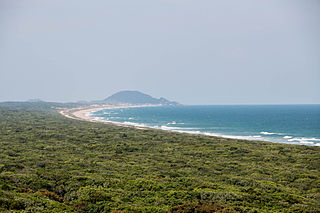
The Acaraí State Park is a state park in the state of Santa Catarina, Brazil. It protects a coastal area in the Atlantic Forest biome. There are issues due to a sizeable population of traditional residents in the park.
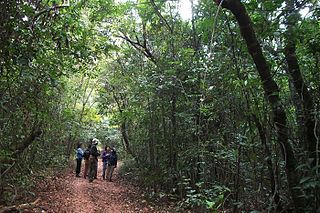
The Matas do Segredo State Park is an urban state park in the state of Mato Grosso do Sul, Brazil. It protects an area of cerrado forest.

The Nova Baden State Park is a state park in the state of Minas Gerais, Brazil. It protects a rugged, forested area that is home to several rare or endangered species of mammals.

The Tainhas State Park is a state park in the state of Rio Grande do Sul, Brazil. It protects forests in the valley of the Tainhas River surrounded by open fields. The main attraction is the Cachoeira do Passo do S, a waterfall.
The Nascentes do Rio Taquari State Park is a state park in the state of Mato Grosso do Sul, Brazil. It protects the headwaters of the Taquari River in an area in the transition between the cerrado and pantanal biomes.

The Fritz Plaumann State Park is a state park in the state of Santa Catarina, Brazil. It protects one of the last remnants of seasonal deciduous forest in the state on the shore of the reservoir of the Itá Hydroelectric Power Plant.
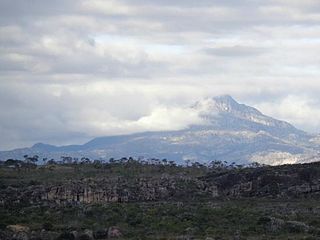
The Pico do Itambé State Park is a state park in the state of Minas Gerais, Brazil. It protects one of the higher peaks in the state.
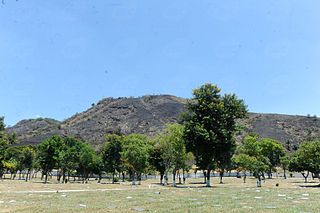
The Pedra Branca State Park is a state park in the state of Rio de Janeiro, Brazil. It is one of the largest urban nature parks in the world. It protects an area of Atlantic Forest in the west of the city of Rio de Janeiro that includes the highest point in the city, the Pico da Pedra Branca.

The Espigão Alto State Forest Park is a state park in the state of Rio Grande do Sul, Brazil. It protects an area of old forest of which araucarias are the most prominent species.

The Grão Mogol State Park is a state park in the state of Minas Gerais, Brazil. It protects an area of high, mountainous terrain with cerrado vegetation, important as a source of water in a region with a dry climate.
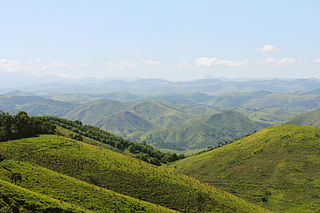
The Serra da Concórdia State Park Portuguese: Parque Estadual da Serra da Concórdia is a state park in the state of Rio de Janeiro, Brazil. It protects an area of Atlantic Forest.
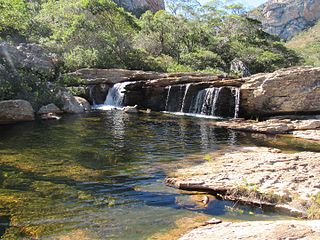
The Serra Nova State Park Portuguese: Parque Estadual de Serra Nova is a state park in the state of Minas Gerais, Brazil. It protects an area of rugged terrain with considerable diversity of flora and fauna.

The Furnas do Bom Jesus State Park is a state park in the state of São Paulo, Brazil. It protects an area of cerrado and Atlantic Forest with high biodiversity in and around a canyon.

The Prosa State Park, formerly the Parque dos Poderes, is an urban state park in the state of Mato Grosso do Sul, Brazil. It protects a remnant of cerrado vegetation, and is home to a wildlife rehabilitation center.
This page is based on this
Wikipedia article Text is available under the
CC BY-SA 4.0 license; additional terms may apply.
Images, videos and audio are available under their respective licenses.


















